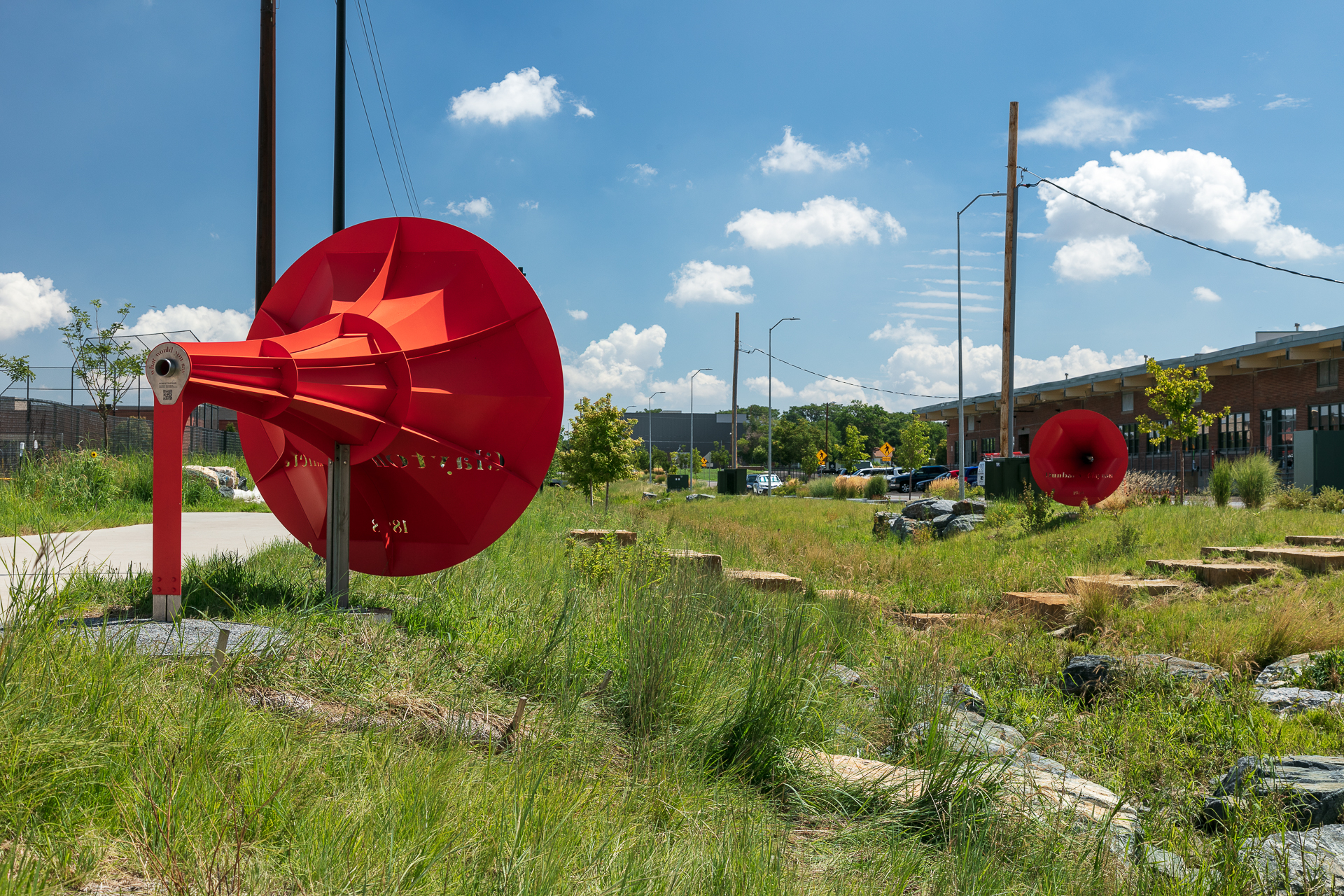-
Title
Markers-“Conversation”
-
Artist
Walzcak & Heiss
-
Location
39th Avenue Greenway between Steele St and York St
-
Neighborhood
Clayton
-
Year
2022
-
Artwork Type
Sculpture Groups
-
Material
painted stainless steel, aluminum
About This Piece
The artist team of Walczak & Heiss created four stainless steel and aluminum sculptures (Whereami, Flood, Zephyr and Conversation) with the overall project titled Markers depicting the culture and history of the Cole and Clayton neighborhoods. The artwork aims to celebrate the neighborhoods and help instill a sense of continuity throughout the Greenway by providing a progression and narrative to unify the public spaces. The artists worked closely with students from the Bruce Randolph School to design the “Whereami” sculpture elements.
This sculpture consists of two metal horns that resemble larger than life megaphones. The familiar form invites visitors to come closer and explore. Positioned across from each other and separated by a field, the megaphones allow people to speak to each other at a distance. A German engineer consulted on the project so that even a quiet whisper would be amplified and projected through space. At once reminiscent of playful childhood games, "Conversation" also points to the critical contemporary dialogue on race. Inscribed on the surface of each horn are references to two important court decisions in Denver concerning race–Clayton v. Hallett (1898) and Dunbar v. Clayton (1969). The earlier case specified founding principles for Clayton College, establishing it as a school for orphaned white boys. In the second case, the discriminatory nature of the school was successfully challenged.
The works explore the evolving significance of the Clayton and Cole neighborhoods, the area that is home to the park, to residents past and present. All of the works are interactive and allow visitors to engage with each piece. Though each work is unique, they all share the same distinctive red-orange hue. They are also grounded in their connection to the site—whether it marks a direction, references local history, or embodies community connections. Markers was inspired by a diversity of sources, including the local community and historical research.
Learn more about Markers on the artists' website.









